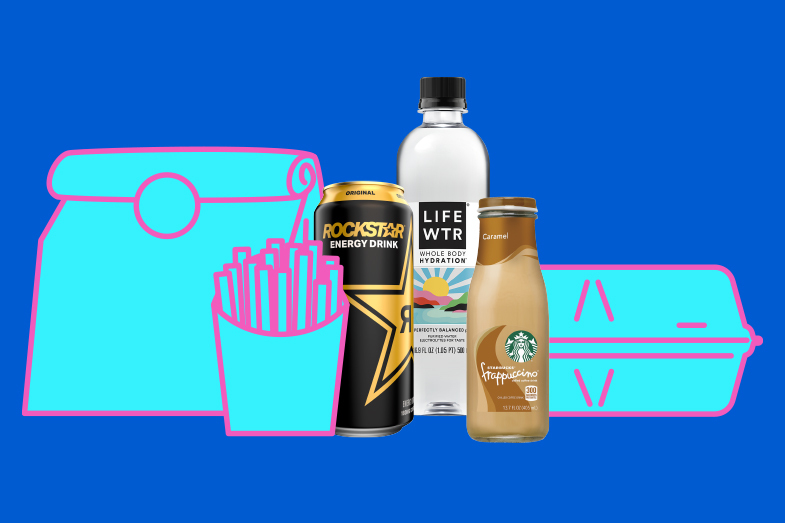T here is no denying the unwavering popularity of coffee as Americans’ caffeinated beverage of choice. But what is changing is the preferred temperature at which it is enjoyed. Consumers today are increasingly turning to cold and iced coffee, which is a big reason why cold beverages overall are outpacing hot beverages in both sales and volume.1 Several key factors are contributing to the shift to cold coffee purchases in foodservice. For starters, consumers’ work-from-home routine has impacted regular hot coffee sales during the breakfast day part. But cold coffee plays a greater role in afternoon pick-me-up and treat occasions1. Additionally, Gen Z and millennial consumers—both high-frequency coffee-purchasers—view cold coffee beverages as more refreshing, better tasting, and more of a treat than hot coffee.2 As a result, savvy operators have been more than happy to accommodate with options that appeal to their customers’ changing tastes.
It's an experiential thing

The surge in cold coffee consumption reflects the broader trend of consumers seeking elevated coffee experiences—especially away from home. The ability to customize and “fancy up” cold coffee like never before plays a huge role. These offerings are often sold in clear plastic cups showing off drink layers like cold foam. Combine that with the ability to add various attractive creams, syrups, and drizzles, and cold coffee drinks have become a shareable social media moment.3
A quick primer on cold coffee

“Cold coffee” is a broad term that covers several different prep methods. Here’s a closer look at the most popular styles and flavors.
Iced Coffee
Brewed with traditional methods and then chilled or poured over ice. Also often prepared with concentrates.
Espresso-based Iced Coffee
Brewed with traditional espresso pressure methods and then chilled or poured over ice.
Cold Brew
Prepared with cold brewing methods (grounds steeped in water, traditionally for 20 hours or more), resulting in a brew that is less acidic/bitter and naturally sweeter.
Nitro Cold Brew
Cold-brewed coffee infused with nitrogen gas, creating a smooth, creamy texture similar to a dark beer’s look and mouthfeel.
Sweet flavors are a natural complement to the milder profiles of sweet coffee. While favorites like vanilla, hazelnut and pumpkin remain popular, more complex flavors like dark chocolate, white chocolate, salted caramel and various dessert-inspired profiles are trending.4
Don't be left out in the cold

For operators, offering cold coffee has gone from nice-to-have to a must-have. This is especially true when you consider that cold coffee orders are the beverages least likely to be replaced by at-home consumption.1 Additionally, while it may have started as a warm-weather treat, cold coffee has moved to a year-round thing.2 The good news is, it’s now easy to serve ready-to-drink options that taste like they were crafted by a barista right on site.
Starbucks® offers a wide selection of cold coffee in a variety of formats and on-trend flavors, including Frappuccino Oat Milk Chocolate Brownie, Doubleshot Energy Caramel and Tripleshot Energy Bold Mocha. And Starbucks’ newest canned Cold Brew is available in Salted Caramel Cream, Vanilla Sweet Cream and Chocolate Cream.
Whether you’re looking to recoup sagging breakfast coffee occasions, or you simply want to give a boost to beverage sales overall, let PepsiCo Partners help with delicious cold coffee offerings that virtually sell themselves.
Sources
1 Technomic Away-from-Home-Beverage Navigator Study (May 2023)
2 CBS News, It’s iced coffee season all year long now, August 2023
3 Business Insider, Coffee chains are betting big on cold drinks as Gen Z turns its back on old-school coffees, August 2023
4 Datassential Iced & Blended Coffee Menu Adoption Curve January 2024


